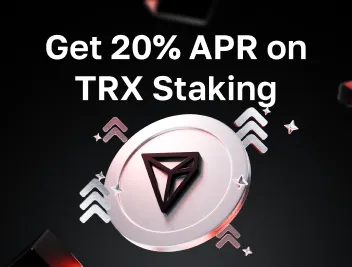
Is Ethereum A Good Investment In November 2025?
Investing in cryptocurrency has been a subject of doubt from the very moment of its creation. Ethereum is no different and still awakens some crucial questions. Is it safe? Should I invest? What will I get if I choose ETH? To help you find the answers, we’ve prepared a detailed article about investing in Ethereum. Let’s get started!
Ethereum As An Investment
Ethereum (ETH) is often considered a strong investment option within the cryptocurrency market due to several key factors:
-
Smart Contract Functionality: Unlike Bitcoin, which is primarily seen as a store of value, Ethereum enables decentralized applications (dApps) and smart contracts. This utility has allowed Ethereum to become the backbone of decentralized finance (DeFi), NFTs (non-fungible tokens), and numerous blockchain-based platforms.
-
Transition to Ethereum 2.0 (Proof of Stake): Ethereum has been transitioning from Proof of Work (PoW) to Proof of Stake (PoS) through Ethereum 2.0. This upgrade improves energy efficiency, scalability, and security, making Ethereum more attractive to investors concerned about environmental impact and long-term scalability.
-
Adoption and Ecosystem: Ethereum has the largest ecosystem of developers, projects, and users in the blockchain space, giving it a competitive advantage over newer blockchains. Many industries are using Ethereum’s blockchain technology for real-world applications, further supporting its long-term value.
-
Inflation and Deflation Mechanism: With the introduction of the EIP-1559 update, Ethereum adopted a mechanism that burns a portion of the transaction fees, which can potentially make the asset deflationary. This feature adds scarcity to ETH over time.
-
Risks: While Ethereum offers substantial growth potential, it is important to consider the risks associated with volatility, regulatory uncertainty, and competition from other Layer 1 blockchains (e.g., Solana, Polkadot).
Ethereum Price Historical Overview
Ethereum has experienced significant price movements since its creation in 2015. Below is a historical overview of Ethereum’s price changes, highlighting key milestones and market trends:
-
2015: Ethereum’s ICO took place in 2014, raising around $18 million, with each ETH priced at approximately $0.30. It officially launched in July 2015, and ETH traded for around $0.70.
-
2016: By early 2016, Ethereum gained attention, and ETH climbed to around $10 by March. In June 2016, Ethereum suffered a major setback due to the DAO hack, which led to the theft of around $60 million in ETH. This event caused a significant price drop, from around $20 to below $10.
-
2017: In January 2017, ETH was priced at about $8, and by March, it had reached $50. Ethereum played a critical role in the Initial Coin Offering (ICO) craze of 2017, as many projects launched their tokens on the Ethereum blockchain. The price rose to an all-time high of approximately $1,400 in January 2018 during the broader crypto market rally.
-
2018: After peaking in early 2018, the entire crypto market entered a bear phase. Ethereum’s price fell sharply throughout the year, declining to around $80 by December 2018.
-
2019: Ethereum experienced a gradual recovery during 2019, driven by developments in decentralized finance (DeFi). The price fluctuated between $100 and $300 during the year.
-
2020: By August 2020, ETH had reached $400. In December 2020, Ethereum began transitioning to Ethereum 2.0, which brought significant attention to the project, pushing ETH’s price to over $700 by the end of the year.
-
2021: Ethereum followed the broader cryptocurrency market in a major bull run, reaching over $4,000 by May 2021. Later it hit an all-time high of $4,891 in November 2021, as interest in the crypto market soared alongside Bitcoin’s price rally.
-
2022: By June 2022, ETH had fallen to below $1,000. In September 2022, Ethereum successfully completed "The Merge," transitioning from Proof of Work to Proof of Stake. This major upgrade brought renewed attention to ETH, although it did not lead to an immediate price rally. The price fluctuated between $1,000 and $1,500 for much of 2022.
-
2023: Throughout 2023, Ethereum saw periods of consolidation and slow recovery. By the end of 2023, ETH was trading between $1,500 and $2,000, with hopes of further adoption and scalability improvements.
-
2024: Ethereum experienced renewed momentum in 2024 as institutional adoption and scalability improvements gained traction. After a volatile start, ETH rallied to trade between $2,500 and $3,000 for much of the year, bolstered by continued network upgrades and growing integration of Layer 2 solutions.
-
2025: Ethereum is kicking off November around $3,370, stabilizing after a sharp drop, with sellers still active yet no signs of panic. Headlines swung sentiment—policy talk gave a brief lift, while on-chain activity cooled—so price chopped around key support rather than breaking down. At the same time, the ecosystem kept building (industry advocacy efforts and fresh L2 scaling milestones), which helped confidence steady. The result is a market that’s cautious but still treating the pullback as consolidation inside a bigger uptrend, waiting for strength to be reclaimed.
Should I Buy ETH Now?
Not yet—buying ETH now looks early. The indicators show the price below a wide set of moving averages that are mostly pointing down, momentum and the MACD in negative territory, and the volume-weighted trend still tilted lower—classic signs of a pressured tape. Short-term signals like Stoch RSI and CCI hint at bounce potential, and the fast Hull average has turned up, but most oscillators are neutral rather than trending, so follow-through isn’t proven. A cleaner entry would come after price reclaims and holds the near-term EMAs, MACD flips up, and the Ichimoku baseline is retaken; until those triggers appear, patience or buying only on confirmed higher lows helps keep risk in check.
Check this article for a detailed ETH price prediction so you can make the right decision.

Is Ethereum Good As A Long-Term Investment?
Ethereum has several qualities that make it a potentially strong long-term investment, but whether it's a good option depends on various factors, including your risk tolerance, market understanding, and overall investment strategy. Here are some reasons why Ethereum may be a good long-term investment:
- Leading Smart Contract Platform:
- Ethereum is the dominant platform for decentralized applications (dApps), smart contracts, decentralized finance (DeFi), and non-fungible tokens (NFTs). Its widespread adoption and first-mover advantage give it a significant position in the blockchain ecosystem.
- Transition to Proof of Stake (Ethereum 2.0):
- Ethereum’s transition from Proof of Work (PoW) to Proof of Stake (PoS) is expected to make the network more energy-efficient, scalable, and secure. The shift to PoS also reduces the inflationary pressure on Ethereum by reducing the supply of new ETH. This upgrade positions Ethereum to better handle growing user demand and compete with other blockchains.
- Developer Ecosystem and Innovation:
- Ethereum has the largest community of developers in the blockchain space. Its continuous improvements, such as Layer 2 scaling solutions (e.g., Optimism, Arbitrum) and the upcoming sharding technology, are expected to enhance Ethereum’s performance and keep it at the forefront of blockchain innovation.
- Decentralized Finance (DeFi) and NFTs:
- Ethereum is the backbone of the DeFi movement, enabling decentralized lending, borrowing, and other financial services without intermediaries. It's also the primary blockchain for NFTs, which have experienced massive growth. The expansion of these sectors could significantly boost the value of ETH in the long term.
- Strong Institutional Interest:
- Ethereum has garnered interest from institutional investors, who view it as more than just a cryptocurrency. Many see it as a technological platform with potential to transform various industries, particularly in finance, supply chain, and real estate. Continued institutional adoption may drive long-term price appreciation.
Some wonder which long-term investment is better: Bitcoin or Ethereum. Which investment option is better depends on your individual goals, risk tolerance, and strategy. Bitcoin may be more suitable for those seeking a more stable store of value with a proven track record, while Ethereum could appeal to those interested in the potential growth of decentralized applications and innovations within the blockchain space.
Ethereum’s combination of strong network effects, real-world use cases, continuous technological innovation, and a deflationary supply model makes it an attractive option for long-term investors. However, risks like scalability challenges, competition, and regulatory uncertainty must be carefully considered.
When You Should Sell Your ETH?
When deciding when to sell your Ethereum (ETH), consider the following key factors:
- Market Conditions
- Technical Indicators: Look for signals like moving averages and support/resistance levels. A significant price surge followed by signs of exhaustion may indicate a good selling opportunity.
- Market Sentiment: Stay updated on news and macroeconomic trends. Negative news can lead to price declines, suggesting it might be wise to sell before further drops.
- Financial Goals
- Profit Targets: If you have specific profit goals, consider selling when they are reached to lock in gains.
- Portfolio Rebalancing: If ETH comprises a large part of your investments, selling some can help diversify and reduce risk.
- Regulatory and Technological Factors
- Regulatory Changes: Increased scrutiny or unfavorable regulations may warrant selling before any negative impact on price.
- Ethereum Upgrades: Major upgrades can affect prices. Selling at peak prices after announcements can be beneficial.
Selling Ethereum should be based on a clear strategy, considering both market conditions and personal financial goals. You should avoid reacting solely to short-term price fluctuations and focus on whether Ethereum’s fundamentals, your investment objectives, and the market environment align with a sale. Carefully evaluate your reasons for selling, ensuring they are tied to your broader financial plan, risk tolerance, and market analysis. Don’t hesitate to contact a financial manager, if needed.
Have you ever invested in Ethereum? Do you plan to do it? Did you find the answers to your questions in our article? Please let us know in the comments!
Rate the article








comments
0
You must be logged in to post a comment